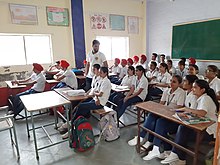
You may want to visit an apple picking farm if your passion is for the outdoors. It is possible to search online for apple picking farms near you or call ahead. For information about hours and varieties, please call ahead. You should bring sunscreen, bug spray and water. While many farms accept credit cards for payment, it is a good idea to bring cash along with your bags and cash if you're picking apples from a farm that does not. Most farms will happily accept payment, but it's possible that you would prefer to bring your own.
Hillview Farms
Whether you want a simple day out with the family or a full day out with your significant other, Hillview Farms in Newburyport, Massachusetts, has everything you need to make your apple-picking experience a memorable one. You can find more than 60 varieties at Hillview Farms, which is open nine to five every day. If you are looking for something new, you will find a farm store that sells delicious products made with fresh local produce.

Bishop's Orchards
If you're in the mood for an apple picking adventure, look no further than Bishop's Orchards. The family-owned orchard dates back over 100 years. The orchard survived the Great Depression, and construction of Interstate 95. Keith Bishop, his four children and their sons now run the farm. I was able try some of the varieties of apples on the farm when I visited.
Dr. Davies Farm
If you are looking for a family-friendly place for apple picking and cider, you've come to the right place. Congers, New York is where Dr. Davies Farm can be found. A hayride is available. There are over four acres of apple trees on the farm. You can also enjoy hayrides and corn mazes. You can bring your dog along to join in the fun.
Barton Orchard
Barton Orchard, North Bend, offers apple picking and corn maze fun. This working orchard boasts a cornmaze and homemade baked goods. Enjoy a delicious cup of apple cider and enjoy a corn maze. You can pick your own apples, or you can just relax in the picnic area. You can even bring your own picnic basket to enjoy the fruit-filled goodies!

Garwood Orchards
Garwood Orchards of LaPorte, Indiana is a great apple-picking location. This family farm has over 200 acres of apple trees and was established in 1831. The apple picking season typically runs from mid August to the end September. There are many apples available to pick from: Zestar, which can be sweet and sugary; Blondee which can be crunchy; and Gold Rush which can be crisp and juicy.
FAQ
How much money does a teacher make in early childhood education? (earning potential)
Teachers in early childhood make an average of $45,000 annually.
But, salaries in certain areas are more than average. Teachers in large urban schools receive higher salaries than teachers in rural schools.
Salaries are also affected by factors like the size of the district and whether or not a teacher holds a master's degree or doctorate.
Teachers make less at first because they aren't as experienced as other college graduates. But their earnings can rise significantly over time.
What are the requirements to be a teacher in early childhood education?
It is important to decide whether you want to enter early childhood education. If so, then you will need to get your bachelor's degree. Some states require that students earn a master’s degree.
You will likely also have to attend classes in the summer months. These courses will cover subjects such as curriculum development and pedagogy (the art or teaching).
Many colleges offer associate programs that lead to teaching certifications.
Some schools offer certificates, while others offer bachelor's and master's degrees. However, some schools only offer diplomas.
If you plan to teach at home, you may not need any additional training.
What does it mean for a teacher to teach early childhood education?
Early childhood educators must have specialized training. Most states require teachers to be certified by their state boards before they can work in public schools.
Some states require that teachers pass exams on reading and math.
Some states require that teachers complete a specific amount of coursework in early childhood education.
Most states have minimum requirements regarding what teachers should know. However, the requirements may vary between states.
What are the different types of early childhood education?
There are many different ways to describe early childhood education. Some of the most popular ones are:
-
Preschool - Children ages 2 to 5
-
PreKindergarten: Children 4-6 years old
-
Head Start/Headstart for Children Ages 0-3
-
Day Care/ Daycares: Children 0-5
-
Child Care Centers: Children from 0-18
-
Family Child Care for Children Ages 0-12
-
Home schooling - Children aged KG to 16.
What are some possible ways to receive scholarships?
Scholarships can be granted to help cover college expenses. There are many kinds of scholarships. These are:
-
Federal Grants
-
State Grants
-
Student Loans
-
Work Study Programs
-
Financial Aid
Federal grants come directly from the U.S. government. Federal grants generally require that applicants meet certain criteria. You will need to prove financial need.
Each state offers state grants. Some states offer state grants based only on financial need. Other states award money for specific reasons.
Banks and other lending institutions issue student loans. Students often borrow money to pay for tuition and living expenses.
Work-study programs are designed to encourage employers to hire qualified students. Employers are required by law to pay minimum wage.
Financial aid covers the majority or all of the tuition costs for low-income families.
Statistics
- These institutions can vary according to different contexts.[83] (en.wikipedia.org)
- Globally, in 2008, around 89% of children aged six to twelve were enrolled in primary education, and this proportion was rising. (en.wikipedia.org)
- Think of the rhetorical power of nineteenth-century abolitionist Harriet Beecher Stowe, Martin Luther King, Jr., or Occupy Wall Street activists with their rallying cry of “we are the 99 percent.” (bostonreview.net)
- Data from the Department of Education reveal that, among 2008 college graduates, 92.8 percent of humanities majors have voted at least once since finishing school. (bostonreview.net)
- And, within ten years of graduation, 44.1 percent of 1993 humanities graduates had written to public officials, compared to 30.1 percent of STEM majors. (bostonreview.net)
External Links
How To
Why homeschool?
There are several things you should consider when deciding whether your child will attend school at home or in a public school.
-
What kind of education do your children need? Are you looking to develop social skills or academic excellence?
-
How involved do you want to be in your child's education? Are you more interested in being kept informed about your child's progress? Would you prefer to be informed about your child's activities? Or would it be better for you to let them make their own decisions?
-
Do you have any special needs for your child? What can you do to help your child with special needs?
-
Is it possible to manage your child’s schedule? Do you have the time and commitment to teach your child at home each day?
-
What subjects are you going to cover? Math, science, language arts, art, music, history, geography, etc. ?
-
What amount of money are you able to spend on your child's education?
-
Is it possible for your child to start school at an early age?
-
Where will you house your child? This includes finding space large enough to house your child, as well providing facilities such as bathrooms and kitchens.
-
What is the age of your child?
-
What time does your child go to sleep?
-
When does he/she wake-up?
-
What is the time it takes to get from point A and point B?
-
What distance is your child from school?
-
How far is it from your home to your child's school.
-
How will you transport your child to and from school?
-
What are some of the advantages of homeschooling?
-
What are their disadvantages?
-
Who will look after your child outside?
-
What are your expectations?
-
What type of discipline do you want?
-
What curriculum will your school use?
There are many reasons why people decide to homeschool their children. Some of them include:
-
Your child might have learning disabilities that make it difficult for him/her to attend traditional schools.
-
You would like to offer your child an alternative educational system.
-
You need more flexibility when it comes to scheduling.
-
Avoid high tuition fees
-
You think your child is receiving a better education in this school than you would receive in a traditional setting.
-
You believe that you can teach your child more than the teacher at a traditional school.
-
You don’t like the way that schools work.
-
The school system's rules and regulations make you feel uncomfortable.
-
You want your child's work ethic to be strong.
-
You want your child's freedom to choose the courses they take.
-
You want your child to receive individual attention.
There are other benefits to homeschooling:
-
It is not necessary to worry about uniforms and books, pencils, pencils, paper, or other supplies.
-
You can tailor your child's education to suit his/her interests.
-
Homeschooling allows parents the opportunity to spend time together with their children.
-
Homeschooled children tend to learn quicker because they are not distracted from their peers.
-
Many homeschoolers score higher in standardized tests.
-
Families who homeschool tend to be happier in general.
-
Homeschool students are less likely to drop out of school.